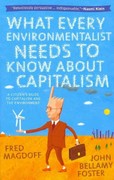Question
1.The Canada-Korea Free Trade Agreement (CKFTA) is a bilateral trade agreement seeking to lower barriers to trade between Canada and South Korea. Suppose you have
1.The Canada-Korea Free Trade Agreement (CKFTA) is a bilateral trade agreement seeking to lower barriers to trade between Canada and South Korea. Suppose you have just graduated and are working for Agriculture and Agri-Food Canada. Your boss asks you to determine the impact of Korean tariff reductions on beef exported from Canada to Korea. Prior to the signing of CKFTA, the Korean tariff on imported beef from Canada was C$2.70 per kilogram. After CKFTA is fully implemented, the tariff will be eliminated by 2029.
Based on research at the University of Guelph, you know the following supply and demand information for Canada and Korea (these supply and demand curves assume all other trade is held fixed):
CanadaKorea
DemandQD= 1775 - 102*PCQD= 528 - 20*PK
SupplyQS= 593 + 52*PCQS= 67 + 24*PK
Where QDis demand in the respective country, QSis supply in the respective country, PCis the price of beef in Canada, and PKis the price of beef in Korea. To simplify the analysis, assume all prices are in Canadian dollars.
You also know that the equilibrium with the initial tariff of C$2.70 per kilogram is as follows:
Canada
Korea
Price of beef (C$/kg)
$7.74
$10.44
Demand ('000 of tonnes)
989.81
320.04
Supply ('000 of tonnes)
993.29
316.55
Exports to Korea ('000 tonnes)
3.49
Imports from Canada ('000 tonnes)
3.49
a.(22 marks) Using the above information, calculate producer surplus, consumer surplus and social surplus for both Canada and Korea, and Korean tariff revenue, prior to the implementation of CKFTA. Show your work.
b.Showing your work, answer the following questions. Note that these questions are designed to take you through calculating the new equilibrium prices, quantities supplied, quantities demanded, and trade under the CKFTA liberalization scenario (i.e. assuming the tariff falls to C$0.00 per kilogram)
i.(3 marks) Derive Canada's excess supply curve
ii.(3 marks) Derive Korea's excess demand curve stated in terms of the price of beef in Korea
iii.(3 marks) Now solve for the equilibrium price of beef in Canada with the eliminated tariff
iv.(6 marks) Now solve for the equilibrium quantity demanded and supplied in
Canada, and equilibrium quantity exported from Canada to Korea
v.(2 marks) Now solve for the equilibrium price of beef in Korea
vi.(6 marks) Now solve for the equilibrium quantity demanded and supplied in Korea, and equilibrium quantity of beef imported from Canada
c.(34 marks) Calculate producer surplus, consumer surplus, and tariff revenue for the market conditions after the implementation of CKFTA (i.e. using the equilibrium calculated in part b above), and compare to the initial equilibrium. Your comparison should focus on the net change in social surplus in each country, as well as the change in consumer surplus and producer surplus in each country, the change in Korean tariff revenue, and discussion about whether producers and consumers in each country are made better off or worse off from the trade liberalization.Use short bullet points to say who is better off and who is worse off. Show your work.
Step by Step Solution
There are 3 Steps involved in it
Step: 1

Get Instant Access to Expert-Tailored Solutions
See step-by-step solutions with expert insights and AI powered tools for academic success
Step: 2

Step: 3

Ace Your Homework with AI
Get the answers you need in no time with our AI-driven, step-by-step assistance
Get Started


